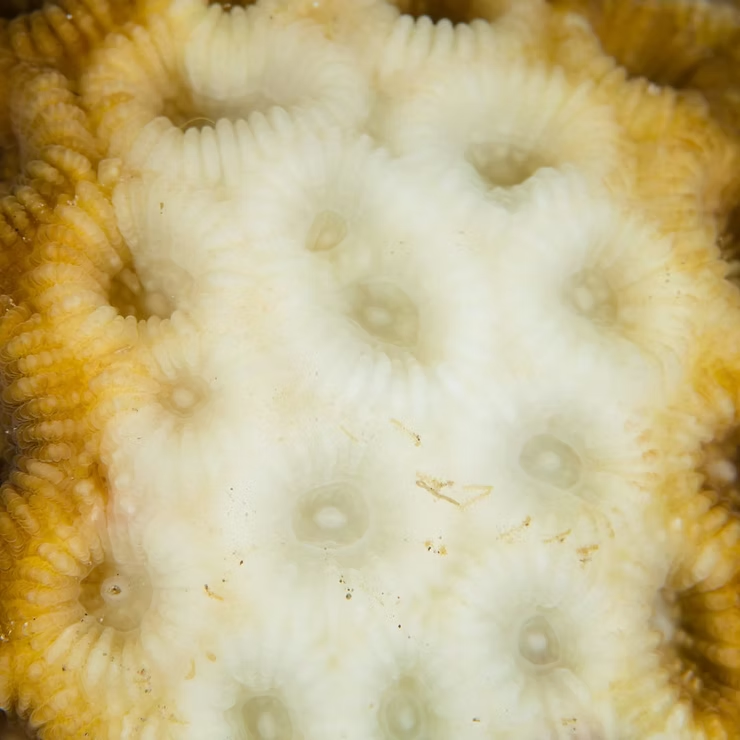Introduction
Coral bleaching is one of the most pressing threats to marine ecosystems, serving as a warning sign of our oceans’ declining health. It jeopardizes coral reef structures and the countless marine species that depend on them for food and shelter. This article explores the causes and consequences of coral bleaching, examining pollution, overfishing, and global policies while emphasizing sustainable fisheries management and collaborative research as critical solutions.
Key Takeaways
- Heavy metal pollution intensifies the impacts of warming waters and overfishing.
- Overfishing disrupts ecological balance and weakens fish populations against climate change.
- Halting overfishing strengthens marine resilience and reduces carbon emissions.
- International treaties, such as the High Seas Treaty, are vital for ocean conservation.
- Fish stocks support biodiversity and carbon sequestration beyond their role as food.
The Bleak Reality of Coral Bleaching
Understanding the Causes
Coral bleaching occurs when rising sea temperatures force corals to expel zooxanthellae, the algae that give them color and nutrients. Without these algae, corals turn white and struggle to survive. Pollution and intense sunlight further exacerbate bleaching events, creating a ripple effect that threatens entire marine ecosystems.
The Domino Effect on Marine Life
The death of corals sets off cascading consequences. Marine species lose critical habitats, biodiversity declines, and invasive species often move in. Overfishing worsens the problem by unbalancing food webs and making ecosystems less resilient to climate change.
- Declining fish populations due to lost coral habitats.
- Displacement of marine species competing for survival.
- Increased vulnerability to invasive species.
Regions Most Affected
- Great Barrier Reef: Repeated mass bleaching events have devastated coral cover.
- Caribbean: Coral disease and bleaching continue to threaten fragile ecosystems.
- Indian Ocean: Nations like the Maldives face widespread reef decline.
- Coral Triangle: The global hub of marine biodiversity is under unprecedented stress.
Pollution and Heavy Metals
Mercury and Lead: Silent Aggravators
Heavy metals like mercury and lead quietly weaken marine ecosystems, amplifying the damage of climate change and overfishing. They increase disease in fish populations, push fishers to exploit deeper waters, and fuel carbon emissions.
The Double Burden
- Heavy metals intensify warming water stress on corals.
- Overfishing compounds ecological vulnerability.
- Comprehensive, ecosystem-based regulations are essential.
Overfishing and Climate Vulnerability
Disrupting Ecological Balance
Overfishing removes key species, destabilizing food webs and paving the way for invasive species. It reduces reproductive success, spreads disease, and amplifies the effects of pollution.
The Vicious Cycle
By weakening ecosystems, overfishing makes them less able to adapt to climate stressors. Research shows that stopping overfishing is not just conservation—it is climate action.
International Policies and the High Seas Treaty
Global Agreements in Action
Treaties like the High Seas Treaty aim to protect 30% of international waters, but without widespread ratification and enforcement, progress stalls. Strong marine protected areas are needed to safeguard biodiversity and maintain carbon sinks.
Urgent Ratification
- Create global ocean sanctuaries.
- Adjust fish quotas to account for carbon sequestration.
- Prioritize ecosystem-based fisheries management at future COP meetings.
The Carbon Connection
Fish as Carbon Stewards
Marine animals play a pivotal role in carbon sequestration. By consuming and redistributing organic material, fish help lock carbon deep in the ocean, reducing atmospheric CO2. Future fisheries policies must recognize fish as climate allies, not just food sources.
Marine Sanctuaries as Climate Allies
Why Sanctuaries Matter
- Provide safe havens for marine life recovery.
- Preserve biodiversity and genetic diversity.
- Maintain ecosystems vital for carbon storage.
Marine sanctuaries offer hope for reversing damage. By protecting critical ecosystems, they strengthen resilience against climate change while supporting local communities and global biodiversity.
Sustainable Fisheries Management
Fisheries’ Role in Climate Mitigation
Well-managed fisheries restore balance to ecosystems, protect vulnerable species, and safeguard carbon cycles. Adaptive strategies, especially for shellfish fisheries and coastal communities, are essential for climate resilience.
Collaborative Research and Future Directions
Shared Knowledge, Shared Solutions
Research highlights eight interconnected impacts of overfishing, pollution, and climate change. From heavy metal pollution to invasive species, the evidence is clear: halting overfishing and supporting marine sanctuaries are powerful climate solutions.
Conclusion
Coral bleaching is more than an aesthetic loss; it is a crisis for marine biodiversity and climate stability. Pollution, overfishing, and weak policies accelerate the decline, but solutions exist. Global treaties, sanctuaries, and sustainable fisheries management can protect marine ecosystems and safeguard our shared future. Protecting the oceans is not just ecological—it is essential for humanity’s survival.

